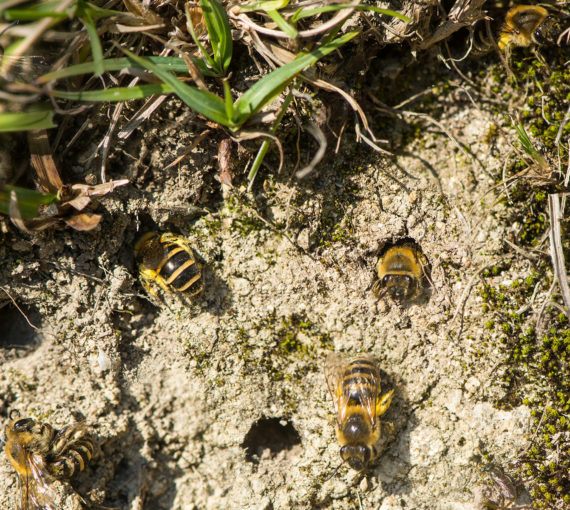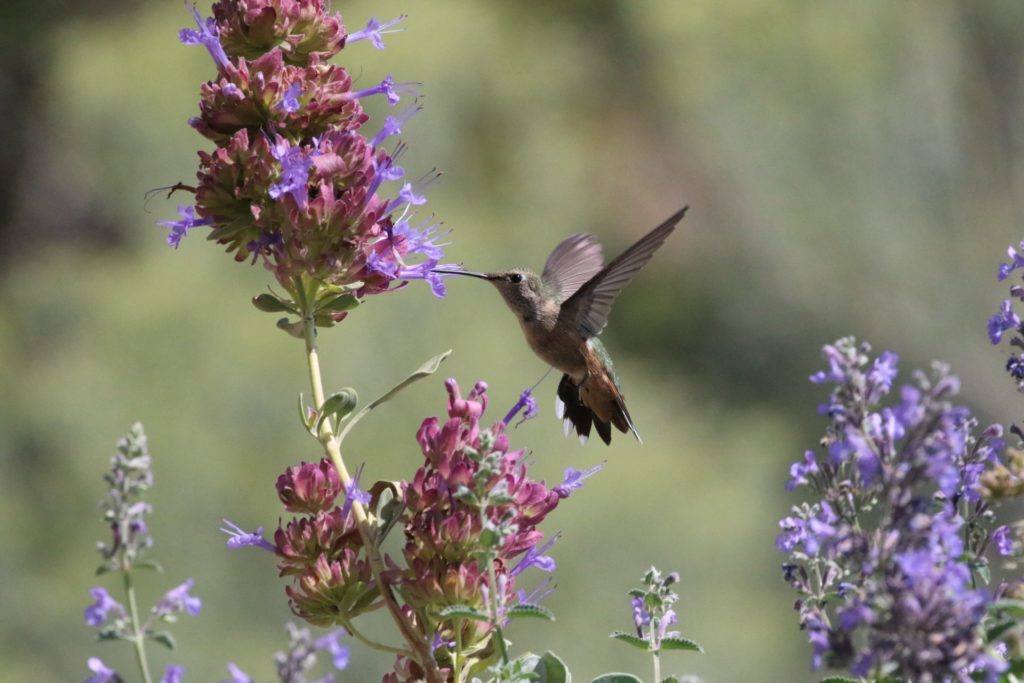
What may seem like a small contribution — a tiny flower pot or garden patch — can provide valuable habitat for pollinators such as hummingbirds, bees and butterflies. (Photo: John Duncan via Unsplash)
A manicured lawn is pollinator-unfriendly. But a yard, community garden, patio or window box filled with native plants can be a pollinator paradise!
Creating space to feed and shelter bees, birds and butterflies is simple and fun. And you’ll meet a new group of neighbours — some with wings, some with feathers and some with six (or more) legs.
You can even take it a step further and plant native wildflowers and plants specific to your ecoregion.
What are pollinators?
Pollinators are animals that help plants reproduce by transferring pollen from one to another. They’re critical in the production of many crops and essential in creating and preserving biodiversity.
Types of pollinators:
- Bats
- Bees
- Beetles
- Birds
- Butterflies
- Flies
- Moths
- Wasps
Flowering plants across wild, farmed and even urban landscapes actually feed the terrestrial world, and pollinators are the great connectors who enable this giant food system to work for all who eat… including us.
Roger Lang, Chairman, Pollinator Partnership
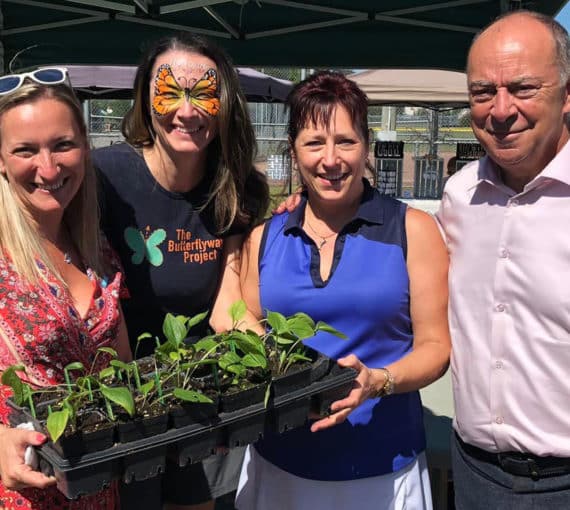
Join a volunteer-led neighbourhood movement
The Butterflyway Project brings nature home to neighbourhoods one pollinator-friendly garden at a time.
Three easy steps to attracting birds, bees and butterflies
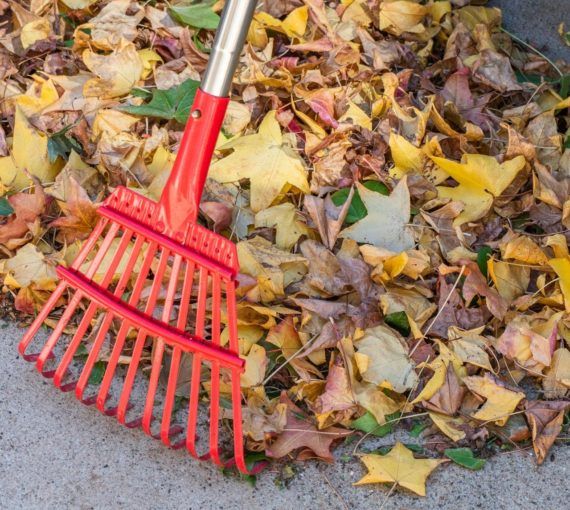
STEP ONE: Change some conventional gardening habits
Untidy yards and gardens help pollinators! Ditch former “norms” and adopt pollinator-friendly habits.
Leave natural debris such as dead stems and dry leaves
What may seem messy to some people is habitat for wildlife, especially overwintering insects. Birds also need materials such as dry grass and vine tendrils to build their nests every spring.
Avoid lawn and garden chemicals
Pesticides and fertilizers kill some pollinators and harm others. They’re bad for humans, too. Pesticides, for example, are linked to autism and Parkinson’s disease. Check out organic gardening resources online and at public libraries.
Appreciate insects. Most provide free services such as pollination, pest control and waste decomposition.
Use a rake instead of a leaf blower
Leaf blowers are typically powered by loud, polluting, two-stroke engines. The noise impairs bird communication. Air pollutants harm the respiratory health of all nearby living things.
Even electric leaf blowers cause habitat destruction, including removing natural debris and eroding and drying out soil.
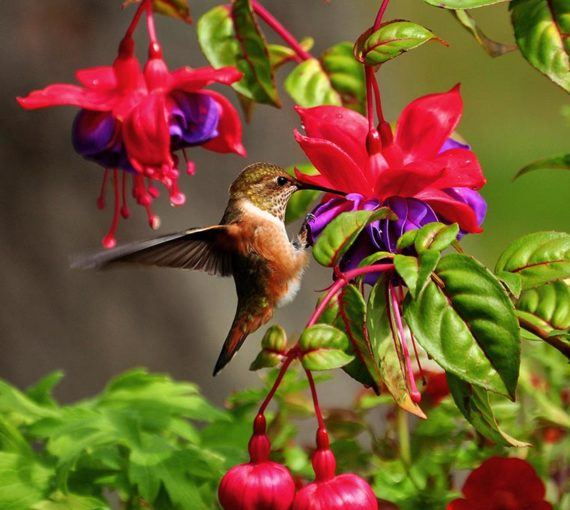
STEP TWO: Create pollinator-friendly conditions
Pollinators are drawn to certain colours and conditions — just like us!
Many bees feed on one or a small number of plants. Include plants with a variety of flower shapes (because bees have different tongue lengths), colours and sizes to attract a diversity.
Bees have good colour vision and like blue, purple, white and yellow. Butterflies and hummingbirds are especially attracted to red.
Create floral bull’s eyes — plant a single species in clumps about one metre (four feet) in diameter instead of in scatterings.
Reduce nighttime outdoor lighting
Many insects and birds are highly sensitive to artificial light, which can impede their navigation, reproduction and ability to find food.
Enjoy your lights when you’re outdoors, then turn them off to allow insects, birds and more to go about their lives with one less hazard.
Attract hummingbirds
Hummingbirds eat insects, not just nectar.
Plant species with brightly coloured and/or tubular flowers, such as cardinal flower, blue flag iris, bee balm, bergamot, wild columbine, spotted Joe pye weed and jewelweed, or annuals such as begonia, cosmos, geranium, petunia, zinnia and nasturtium,
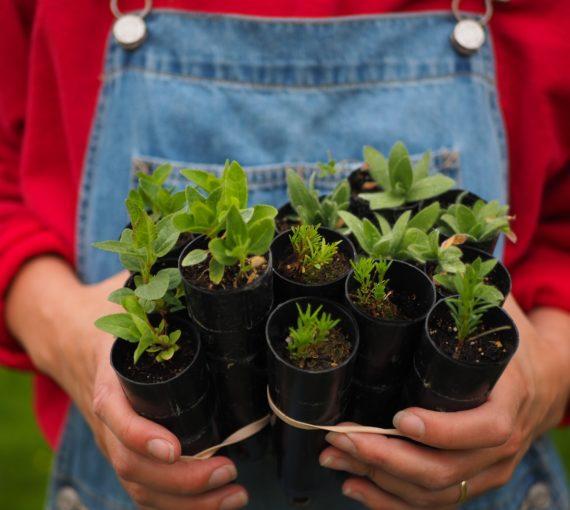
STEP THREE: Start planting!
Think you need a big yard to start planting? Think again! You don’t need a lot of outdoor space to start a garden. You can grow your pollinator paradise right on your balcony, patio or windowsill.
Include a diversity of woody and soft-stemmed native plants
Aim for a succession of blooms so pollen (which provides protein and fats) and nectar (sugar, an energy engine) are available from spring through to fall.
Flowers bred to please humans (for things like size and complexity) are sometimes sterile and of little use to pollinators. Straight (unaltered) native plants or heirloom varieties of non-native plants are best. Pussy willow is an excellent early blooming plant that grows throughout much of Canada.
Plant sunflowers
Tall sunflowers are beacons for pollinators.
Get kids involved! The seeds are big — easy for tiny hands. Push each seed two centimetres (one inch) into the soil. Space big varieties three to five feet apart.
Choose dwarf varieties, like music box (grows a few feet) for raised beds or in large containers, like half-barrels.
Leave the flower in the garden as a natural fall and winter bird feeder, much loved by chickadees and finches.
Plant native wildflowers and plants for your ecoregion
Pollinators have evolved to depend on the native plants and species in their specific regions for food and habitat. Help support the health and diversity of local ecosystems while creating beautiful, beneficial pollinator habitat by planting native wildflowers, trees and shrubs for your ecoregion.
Discovering what ecoregion you live in and what native wildflowers and plants grow there can be fun and educational! Invite your friends and family to join you.
Each ecoregion has unique ecological characteristics, and though many plants and wildflowers are native to multiple ecoregions, you may discover a beautiful new plant or wildflower specific to your area.
DISCOVER YOUR ECOREGION BY PROVINCE
What’s a native plant?
Native plants evolved over millennia along with other plant species, animals, fungi and bacteria in the presence of native soil and climatic conditions.
They play an important, foundational role in ecosystems, providing food, shelter and nesting material for insects, birds, mammals, amphibians and reptiles. They’re also tied to Indigenous cultures that use them for food, fibre, medicine and ceremony.
Choose from the huge number and diversity of native plants for their beauty and to support pollinators and other wildlife. Seed libraries, seed swaps and salvaging from development sites are great ways to source locally adapted (often free!) native seeds and plants.
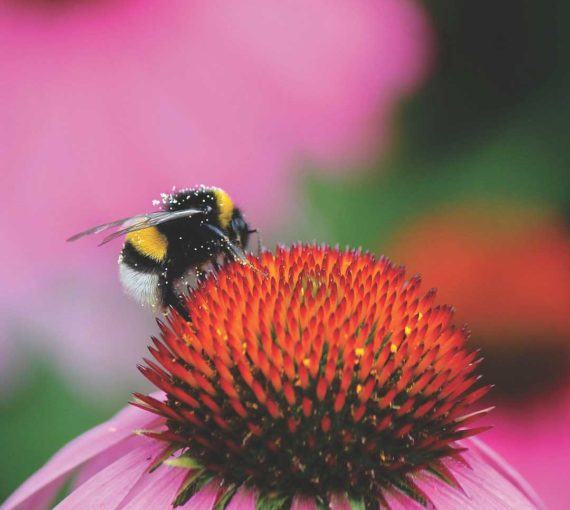
How to tell bees from wasps or flies
If it’s cute, it’s probably a bee.
Interested in the barbecue? Likely a wasp (bees are vegetarian).
Big bulging eyes and two wings? It’s a fly.
Take our quiz and learn how to tell different flying critters apart. Did you know male bumblebees have moustaches and mining bees wear pollen pants?



